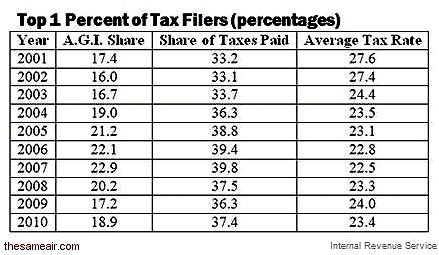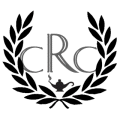{The following is a guest post by SameAir, the founder of The Same Air.}
New IRS data suggests that the wealthiest Americans contribute an increasing percentage of their income to taxes for a simple reason: their income has increased. This report combines Democrat and Republican worldviews. Republicans consistently argue that the wealthy are burdened by excessive taxation and pay more than their fair share. Democrats counter by contending that the increase is caused by rising income. This, it seems, is true.

In 2001, the top 1% contributed 33.2% to the nations tax pool. In other words, of the total taxes collected by the U.S., about one-third of that money came from the top 1% of Americans. Nine years later, in 2010, that share increased 3.8%. This supports the Republican assertion that, indeed, the share of our taxes assessed on the wealthy has increased.
However, supporting the Democrat-backed notion, the top 1% has seen their tax rate decrease 4.2%. To say it another way, the portion of the top 1%’s income paid to taxes has decreased. Over the last 9 years, the top 1% has been able to keep more of their money.
The necessary conclusion drawn from this data is that the income of the top 1% has risen over these 9 years. If the percentage of my income that goes to taxes has decreased, but the dollar amount I pay in taxes has increased, I must have more money. These trends, put alongside one another, speak to our need to look at data in a holistic and uniform way before using said data to back a policy platform. We all have little slices of the truth.
What’s more, unrealized capital gains are excluded from this data. So, if I’ve purchased stock in Google when it was $1/share and it rises in value to $600/share, that income is not calculated into IRS tax data until I sell the stock. It’s no secret that the wealthiest Americans benefit most from capital gains. What else does the 1% have hiding in their stock portfolios?
Lastly, even when Democrats and Republicans are correct, the top 1% are still not playing by the rules. As the graph indicates, from 2001 -2010 the highest tax rate on these folks was 27.6%. The top income bracket in the U.S. tax system is supposed to pay 35%. The difference may not seem important, but 7.4% of billions of dollars can add up fast.
Should the wealthy pay more or do they already pay too much?
{Editor’s Addendum: Here’s an interesting re-evaluation of the common talking point of a 91% tax rate for the rich during the good ol’ days.}

